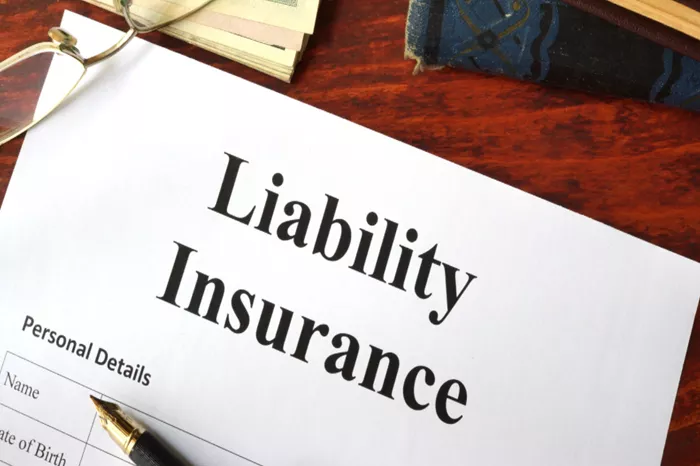All risk property insurance is a comprehensive form of insurance coverage that protects policyholders against a wide array of risks and perils that can cause damage or loss to their property. Unlike named perils insurance, which only covers specific risks listed in the policy, all risk property insurance covers all potential causes of loss unless explicitly excluded. This type of insurance provides broad protection, offering peace of mind to property owners and businesses by ensuring that they are covered for most unforeseen events.
Understanding All Risk Property Insurance
All risk property insurance is designed to offer extensive coverage to property owners, minimizing the financial impact of unexpected damage or loss. It covers both residential and commercial properties, making it a versatile option for individuals and businesses alike.
Key Features of All Risk Property Insurance
Comprehensive Coverage
All risk property insurance offers extensive coverage, protecting policyholders against a wide range of potential risks. This includes damage caused by natural disasters such as fires, floods, earthquakes, and storms, as well as man-made risks like theft, vandalism, and accidental damage.
Exclusions
While all risk property insurance provides broad coverage, it does not cover every possible risk. Policies typically include a list of specific exclusions, which can vary depending on the insurer. Common exclusions may include war, nuclear hazards, wear and tear, and intentional acts of the insured. It is crucial for policyholders to carefully review their policy to understand what is not covered.
Benefits of All Risk Property Insurance
Financial Protection
One of the primary benefits of all risk property insurance is the financial protection it offers. In the event of a covered loss, the insurance company will compensate the policyholder for the cost of repairs or replacement, up to the policy limits. This can prevent significant financial hardship and help property owners recover more quickly.
Peace of Mind
Knowing that your property is protected against a wide range of risks can provide peace of mind. Property owners can rest assured that they are covered for most unforeseen events, reducing the stress and anxiety associated with potential losses.
Versatility
All risk property insurance is suitable for various types of properties, including residential homes, commercial buildings, and industrial facilities. This makes it a versatile option for individuals and businesses seeking comprehensive protection.
How All Risk Property Insurance Works
Policy Structure
All risk property insurance policies typically consist of several key components, including the declarations page, insuring agreement, exclusions, conditions, and endorsements.
Declarations Page
The declarations page provides an overview of the policy, including the policyholder’s name, the property covered, the policy period, and the coverage limits. It also outlines the premium amount and any applicable deductibles.
Insuring Agreement
The insuring agreement details the coverage provided by the policy. It specifies that the insurer will compensate the policyholder for direct physical loss or damage to the covered property, except for the exclusions listed in the policy.
Exclusions
The exclusions section outlines the risks and perils not covered by the policy. It is essential for policyholders to carefully review this section to understand the limitations of their coverage.
Conditions
The conditions section outlines the responsibilities of the policyholder and the insurer. This includes requirements for reporting claims, providing proof of loss, and cooperating with the insurer during the claims process.
Endorsements
Endorsements are additional provisions that modify the terms of the policy. They can be used to add or remove coverage, change policy limits, or adjust other policy terms. Policyholders should review any endorsements to understand how they affect their coverage.
Claims Process
Reporting a Loss
In the event of a loss, policyholders must promptly report the damage to their insurer. Most insurers require notification within a specific timeframe, typically 24 to 48 hours after the loss occurs.
Assessment and Documentation
The insurer will assess the damage to determine the extent of the loss. Policyholders may be required to provide documentation, such as photos, receipts, and repair estimates, to support their claim.
Adjuster Evaluation
An insurance adjuster may be assigned to evaluate the damage and determine the amount of compensation. The adjuster will inspect the property, review the documentation, and may consult with contractors or other experts.
Settlement
Once the insurer has evaluated the claim, they will provide a settlement offer. If the policyholder agrees with the offer, the insurer will issue payment for the covered loss, minus any applicable deductibles.
See Also: The 8 Best Malpractice Insurance of 2024
Common Exclusions in All Risk Property Insurance
Wear and Tear
All risk property insurance does not cover damage caused by normal wear and tear. This includes deterioration, corrosion, and mechanical breakdowns. Property owners are responsible for maintaining their property to prevent such issues.
Intentional Acts
Damage caused by intentional acts of the policyholder is typically excluded from coverage. This includes deliberate destruction or harm to the property.
War and Nuclear Hazards
Most all risk property insurance policies exclude damage caused by war, military actions, and nuclear hazards. These events are considered catastrophic and are generally not covered by standard insurance policies.
Flood and Earthquake
While all risk property insurance covers many natural disasters, it often excludes specific perils like floods and earthquakes. Policyholders may need to purchase separate flood or earthquake insurance to protect against these risks.
Factors Affecting Premiums
Property Location
The location of the property plays a significant role in determining the insurance premium. Properties in areas prone to natural disasters or high crime rates may have higher premiums due to the increased risk of loss.
Property Value
The value of the property also affects the premium. Higher-value properties typically require higher coverage limits, resulting in higher premiums.
Coverage Limits and Deductibles
The coverage limits and deductibles selected by the policyholder can impact the premium. Higher coverage limits provide greater protection but may result in higher premiums. Conversely, higher deductibles can lower the premium but require the policyholder to pay more out-of-pocket in the event of a loss.
Importance of Reviewing and Updating Your Policy
Regular Review
It is essential for policyholders to regularly review their all risk property insurance policy to ensure it continues to meet their needs. Changes in property value, improvements, and additions can affect coverage requirements.
Policy Updates
Policyholders should update their policy to reflect any significant changes to the property. This includes renovations, additions, and changes in use. Failing to update the policy can result in inadequate coverage and potential claim denials.
Choosing the Right All Risk Property Insurance
Assessing Your Needs
Property owners should assess their insurance needs based on the value of their property, potential risks, and coverage requirements. This can help determine the appropriate coverage limits and policy features.
Comparing Policies
Comparing all risk property insurance policies from different insurers can help property owners find the best coverage at a competitive price. It is essential to review the terms, exclusions, and endorsements of each policy to ensure it meets their needs.
Working with an Insurance Agent
An experienced insurance agent can provide valuable guidance in selecting the right all risk property insurance policy. They can help assess coverage needs, compare policies, and navigate the claims process.
Conclusion
All risk property insurance offers comprehensive protection against a wide range of potential risks and perils, providing financial security and peace of mind to property owners. By understanding the key features, benefits, and exclusions of this type of insurance, property owners can make informed decisions to protect their valuable assets. Regularly reviewing and updating the policy ensures that coverage remains adequate and reflects any changes to the property. Working with a knowledgeable insurance agent can further enhance the process, helping property owners find the best coverage to meet their needs.






















